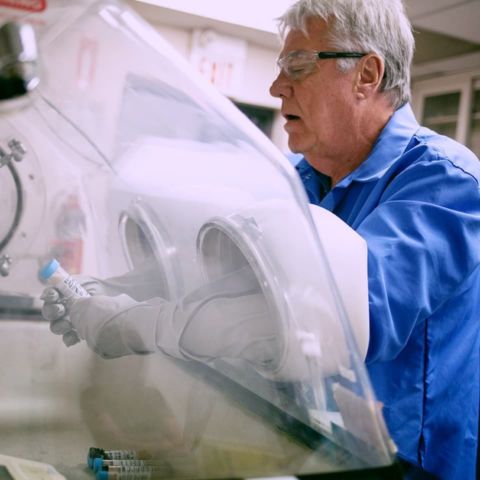PSA Hydrogen Purification
Hydrogen gas is produced from a variety of different processes and is typically produced in an impure form. Typical processes include chemical synthesis by methane steam reforming, off-gassing from styrene or ethylene plants where hydrogen gas is produced as a by-product, and petrochemical applications such as hydrocracking or desulphurization. To use the hydrogen, a purification process is necessary to create purified hydrogen gas. Hydrogen pressure swing adsorption (H2PSA) is a process that capitalizes on the volatility of hydrogen and its overall lack of polarity and affinity for zeolites to purify contaminated gas streams.
Hydrogen generation typically involves the production of contaminants or side products that need to be removed. It includes compounds such as carbon monoxide, carbon dioxide, nitrogen, water and unreacted hydrocarbons. Hydrogen PSA takes advantage of the preferential adsorption of these components, eliminating them from the hydrogen stream to yield purified hydrogen.
Traditionally, Hydrogen PSA takes advantage of multiple sieve beds and is comprised of four phases: an adsorption phase, a depressurization phase, a regeneration phase and a repressurization phase. In the process, the impure stream of hydrogen is passed into the sieve bed where impurities are selectively adsorbed onto the molecular sieve under pressure. After the adsorption step is completed, regeneration is accomplished by depressurizing the bed which decreases the affinity of the impurities allowing them to be discarded. Further purification of the bed is achieved by purging with pure hydrogen to remove any remaining contaminants. The bed is again pressurized to repeat the adsorption process. The beds run in sync to allow continuous hydrogen generation.
Zeochem announces partnership with Headwater Solutions to enhance PSA Hydrogen capabilities
After a professional relationship spanning two decades, Zeochem and Headwaters Solutions LLC have partnered to supply new H2 PSA units worldwide and to provide advanced revamp services to extend H2 PSAU product recovery and purity. Leveraging Zeochem’s unique capabilities in high adsorption capacity zeolites for critical impurities and Headwaters’ extensive experience in building H2 PSA units and developing innovations in PSA control and fabrication, the H2 PSA’s supplied through our global partnership equal or exceeds the highest known performance standards. To learn more please visit Headwater Solutions.
